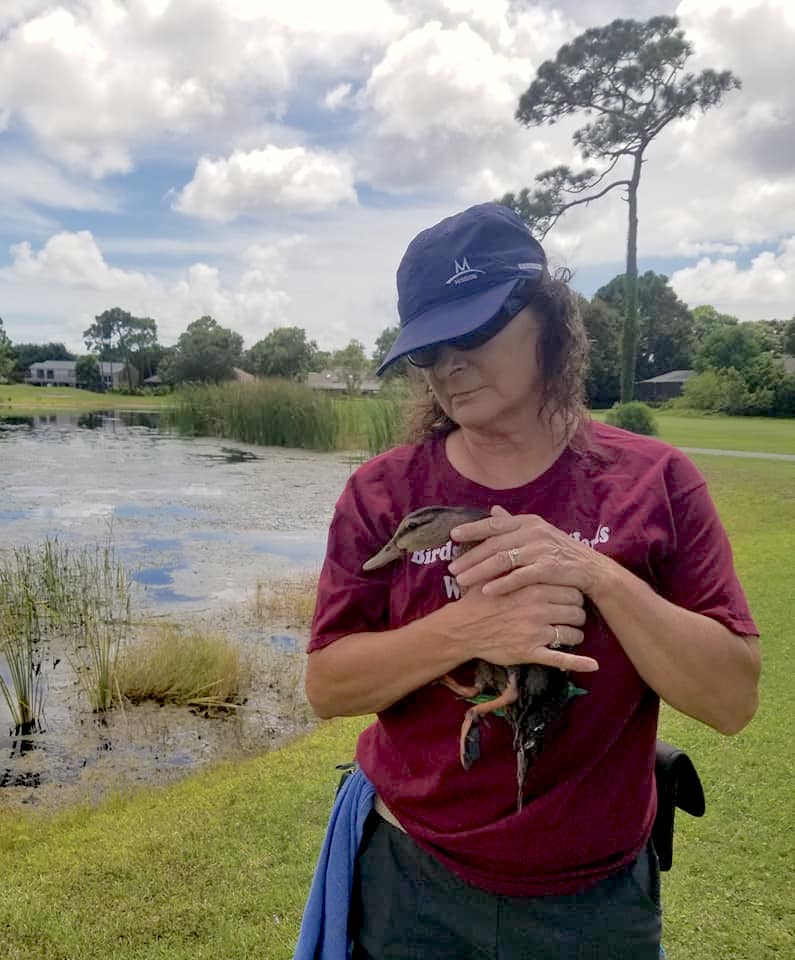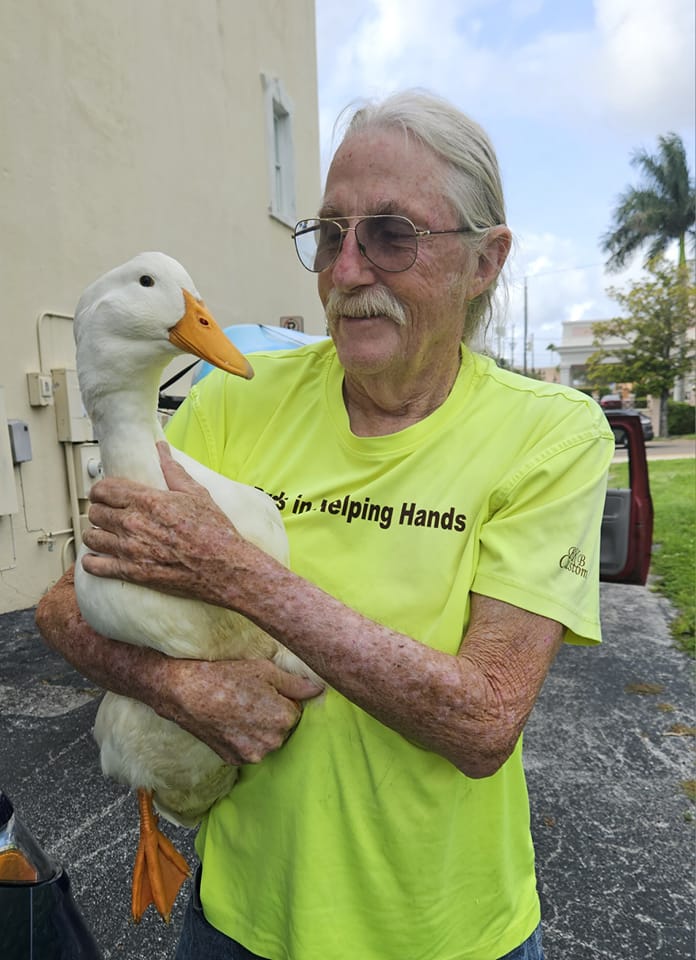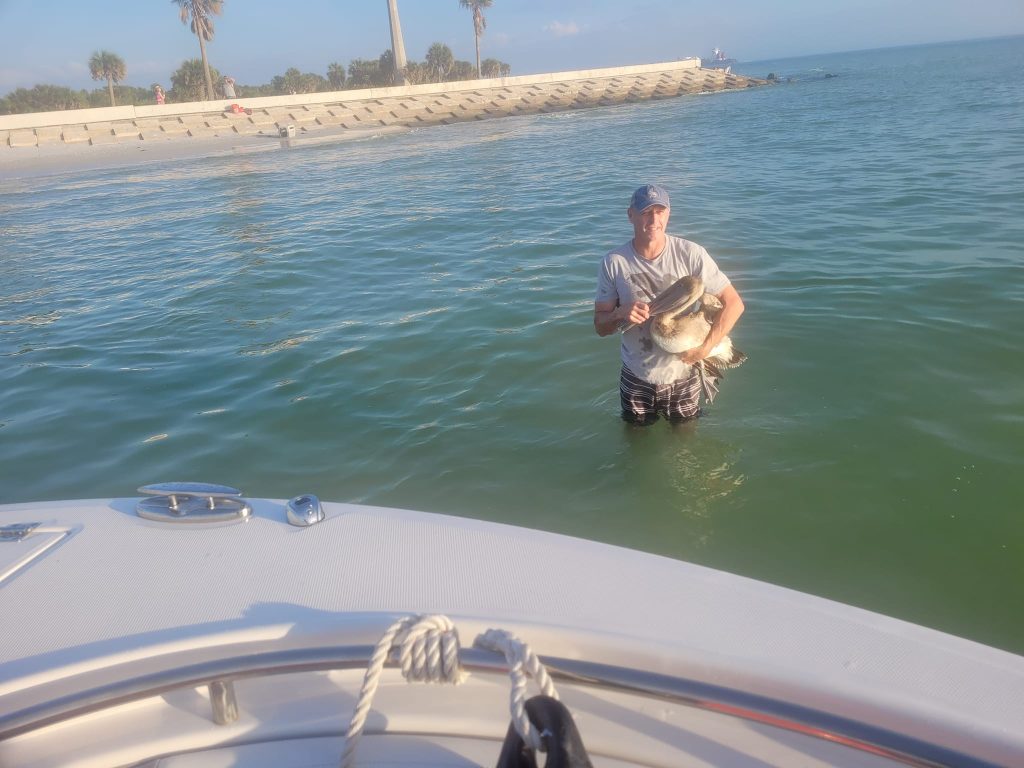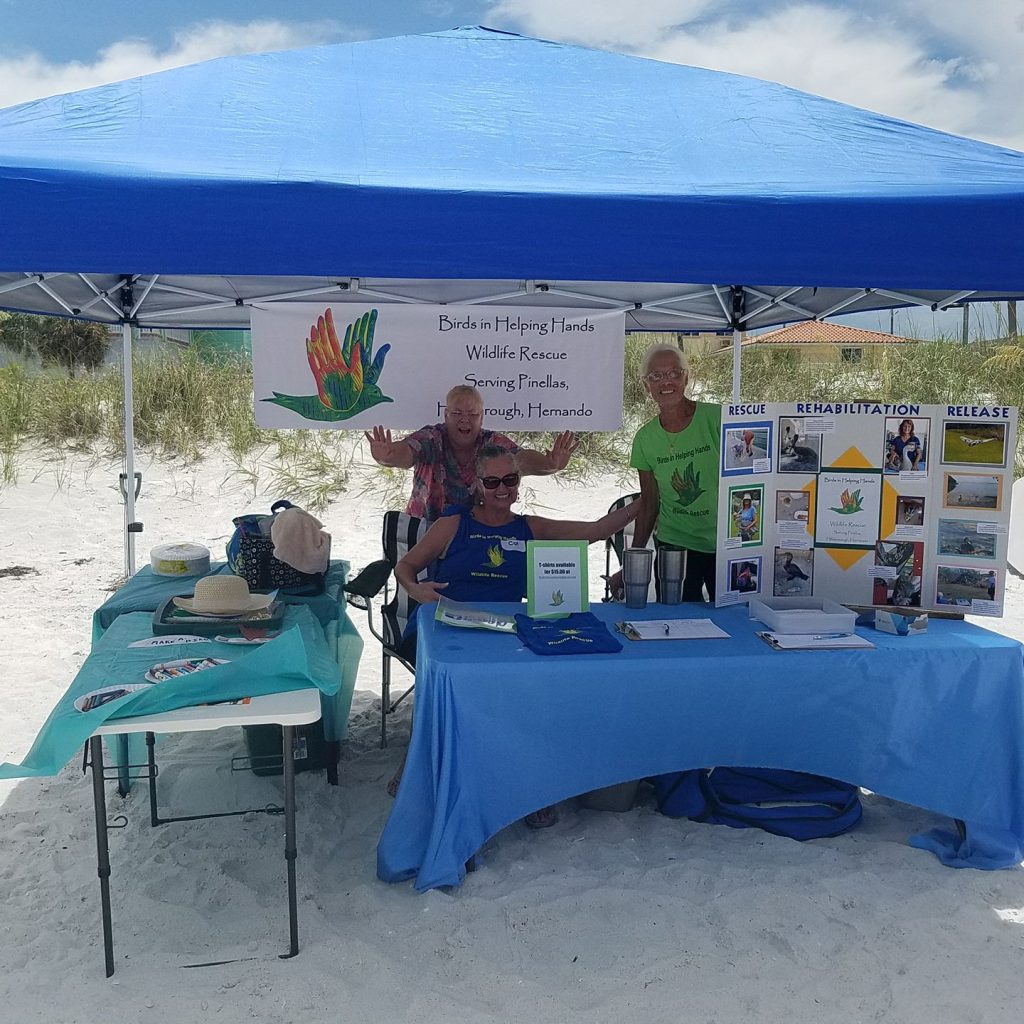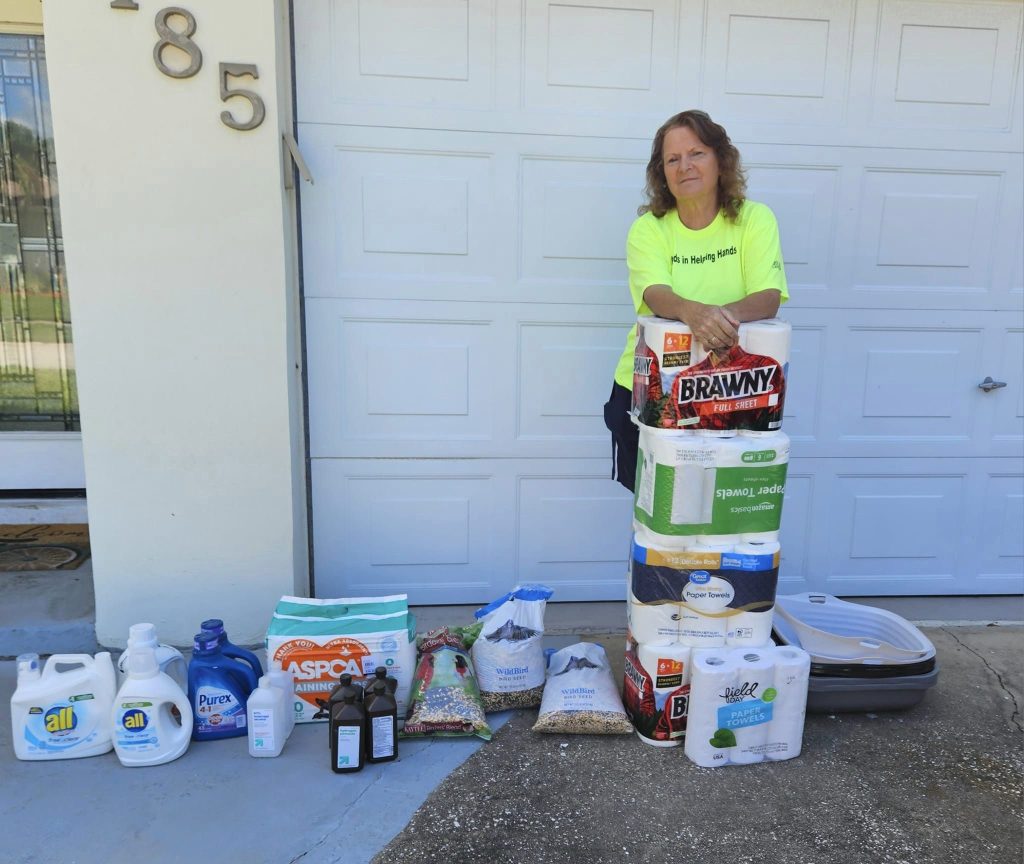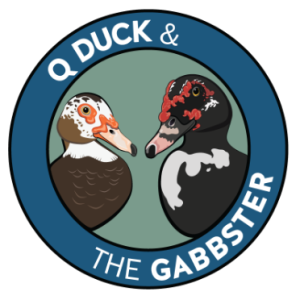Shelley Vickery has been going to bat for the birds of the Tampa Bay area and beyond for nearly a decade. These days, even squirrels, snakes, turtles, and opossums can thank her can-do attitude when it comes to local wildlife – and her organization, Birds in Helping Hands. Now one of the largest nonprofit all-volunteer bird and wildlife rescue groups in the area, Shelley’s mission started small.
“I started volunteering at the then-Suncoast Seabird Sanctuary about 2014,” she explains. “I became more and more involved and became a paid employee and ran the hospital for over a year. I left to start my own wildlife rescue organization due to the lack of rescuers in the area and the overwhelming amount of wildlife that needed help.”
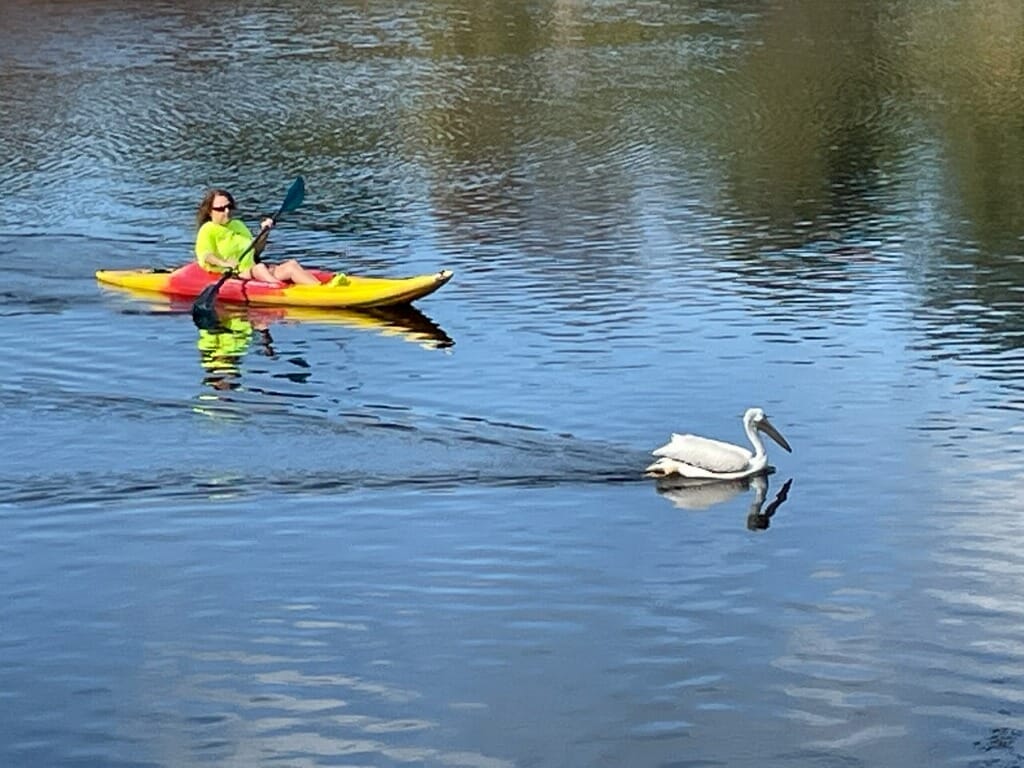
Shelley Vickery doing a wellness check on a recent rescue. Image courtesy of Birds in Helping Hands.
Shelley says she originally partnered with a local rehabber, but her “heart was always more excited about rescuing.” So, she changed direction to rescue and rehoming only. That was 2019.
“We are mostly the ambulance,” Shelley explains, noting that BHH helps fill an important gap in local bird and wildlife rescue. “We will go rescue and transport the wildlife to one of 12 permitted rehabbers and facilities. We match up the wildlife with the best person for that species, even if we have to travel an hour to get them there.”
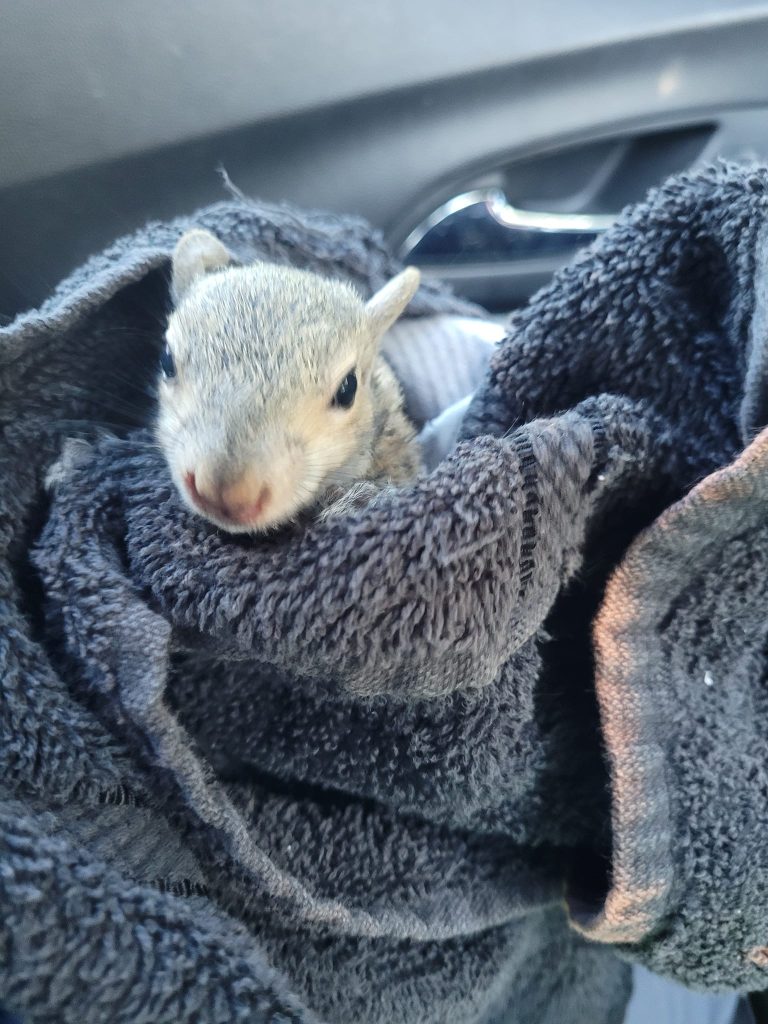
A happy rescue story: this baby squirrel was knocked from its nest by a tree-trimer. Later, the vet found it had a disease that would have been deadly if not treated. Image courtesy of Birds in Helping Hands.
Initially, says Shelley, her rescue mission was focused on local birdlife – “everything from a sparrow to a sandhill crane or turkey,” she says. But it wasn’t long before people started to approach her with other rescue challenges.
“We had people handing us baby squirrels in pet stores,” she recalls. “We now do ducks, turtles, moles, bats, opossums, snakes, chameleons – just about anything.”
Shelley notes that BHH is the only local rescue to take in non-native ducks, and non-native wild parrots. “We cannot release them, but can find permanent homes for them.”
It Takes Skill and Dedication
While the organization relies solely on volunteers and much-needed donations to operate, Shelley has built a wide network – including area law enforcement, city and park officials, SPCA, hotels, marinas, veterinarians, tree trimmers, residents and visitors – to back up BHH’s rescue efforts. And the organization has become especially capable at navigating Florida’s trickier terrain.
“Our rescue is unique because of our specialized equipment – nets that expand 24 feet, bow nets that you set up like a large rat trap, basically, but it doesn’t harm the bird,” Shelley explains. “The netting goes over the bird on the ground and the rescuer can be up to a mile away when they hit the button that releases the net. We also have people with kayaks and paddleboards in numerous parts of [Pinellas] county, also several stored at strategic spots for us to use. We have about 95 volunteers in three counties and go south of the Skyway Bridge occasionally.”
After nearly a decade of experience, Shelley – who was recently profiled as an “Everyday Hero” by local news outlet BayNews 9 – and her volunteer rescue team have developed keen skills and dogged determination, especially when it comes to more elusive species.
“The bird that has unique challenges are the anhingas or snake birds,” she notes. “We get calls daily about them because they get fabric, rope, scrunchies – you name it – on their beaks. They have serrated beaks inside. It’s like Velcro and when they are foraging and poking around for food, they get these items stuck and most of the time cannot open their mouths for food.”
Unlike some other species, Shelley explains, anhingas won’t respond to baited traps. Helping these birds is a true labor of love for even skilled rescuers.
“They are skittish and hard to catch. We have a rescuer, Mickey Zucker, who has specialized equipment and has spent seven hours waiting for the bird to step into her net – or fall. We also have several others, like Ed Bokor, who has cast-netted them successfully. Also, AJ who goes out at night and catches them way up in a tree when they are sleeping.”
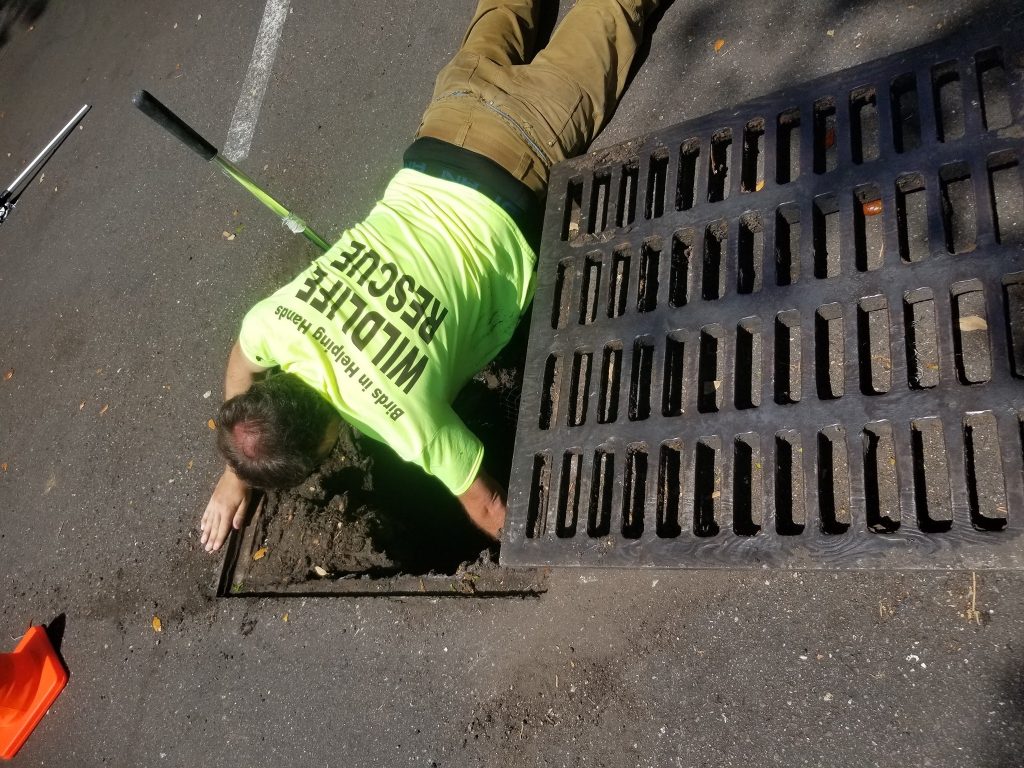
A BHH rescuer saving a momma Muscovy and her babies who were trapped under runoff grate. Image courtesy of Birds in Helping Hands.
What We Can All Learn
While rescue is vital and central to BHH mission, an ounce of prevention is worth even more. The group also regularly participates in events to get the word out about how we can protect our local wildlife.
“We do lots of educational outreach,” Shelley says. “We are invited to speak at condo associations, birding clubs, and environmental organizations. We also do lots of events and festivals to get the word out. We post informational articles to inform our Facebook followers.”
“We also are involved with the Safety Harbor Strong Owls & Nature group. We wrote a grant to get pamphlets and event materials made about the effects of rodenticide on our owls, all birds of prey and pets. We have been on the news a dozen times, sharing information about [the effects of] red tide, rodenticide poisoning, and more.”
What’s the best thing we can do to help wildlife?
“We need to be good stewards and clean up garbage, especially fishing lines. Fishing line and garbage injures more of our wildlife than anything else,” says Shelley. “Pick up garbage whenever possible. Plastic is found in tiny sea turtles and many birds’ stomachs. Plastic kills, so please always pick it up and dispose of garbage properly.”
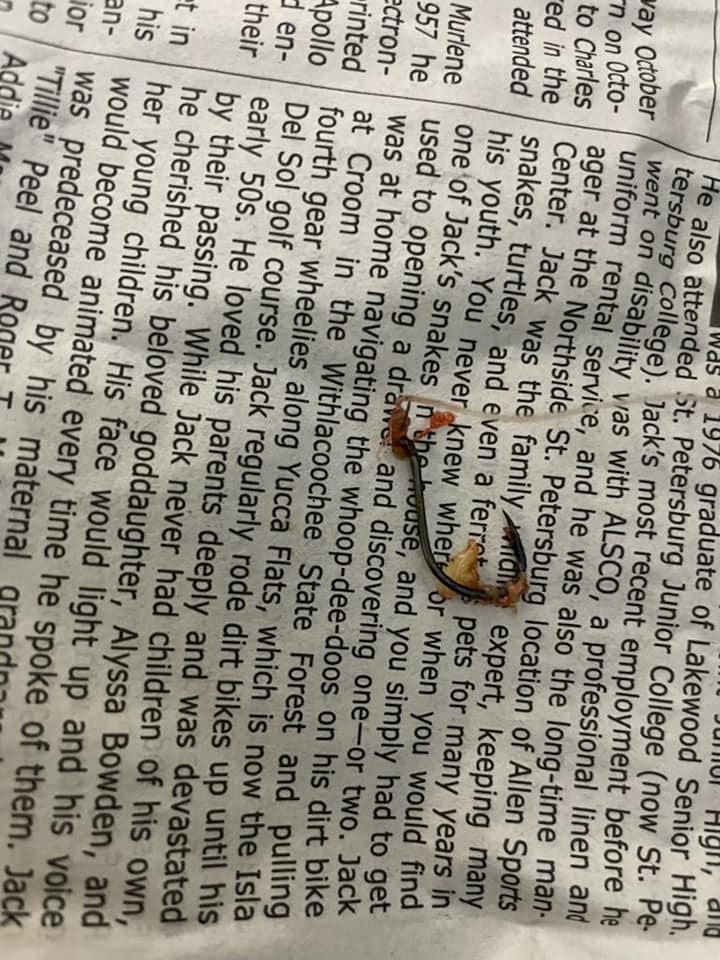
Fish hooks and fishing line are a huge danger, especially for water birds. Image courtesy of Birds in Helping Hands.
She also encourages people to report any wildlife harassment or abuse of wildlife or domestic animals, and to call BHH if they suspect an animal needs rescuing.
“Many people release their pets, like rabbits or roosters, when they can no longer keep them. If people can guide them to us, we are really good at finding homes. If you see wildlife that looks to be in distress, contact us. If you see wildlife in the same place for more than two hours, contact us. Stay with the animal and take photos of the animal and the area it is in. This helps greatly – get an exact location, drop a pin, get a nearby house address. Don’t leave until we contact you!”
Pesticides and herbicides are especially harmful to local birdlife, says Shelley, and she implores people to find natural or native solutions.
“Please don’t spray around lakes or ponds, especially if you have ducks or birds that eat the grasses. Pesticides are the number-one killer of all kinds of wildlife – weed killer has even killed cows and goats. Pesticides, especially ant poison granules, can be consumed by a variety of animals that graze in your yard. Please be careful and don’t use rat bait. The rats don’t die right away, and pets and wildlife can die too if they attempt to bite or eat them.”
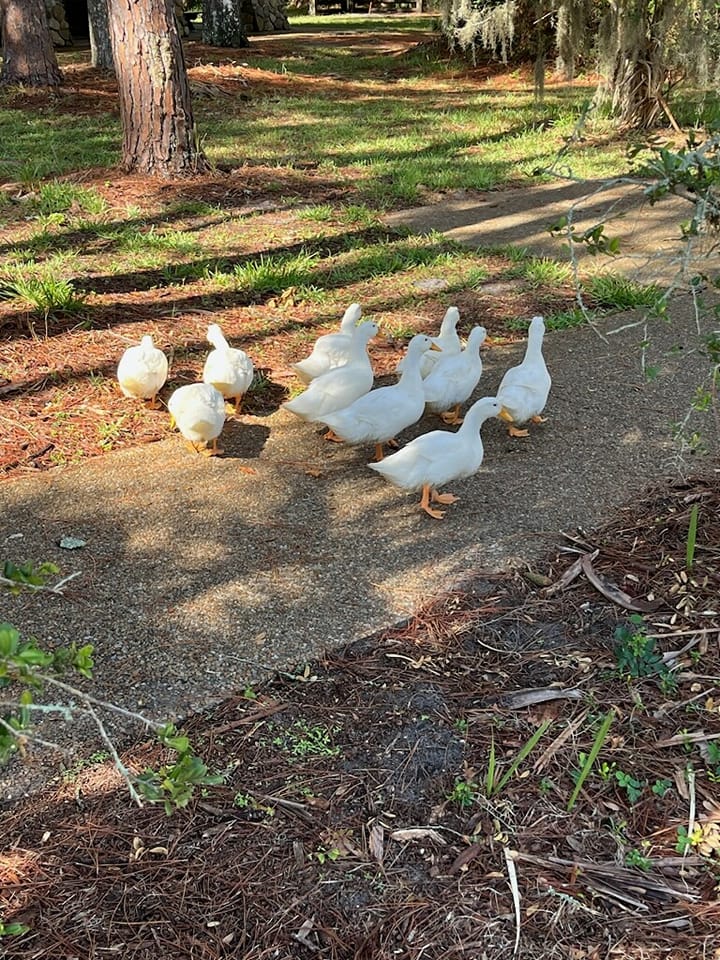
BHH rescued a group of Pekin ducks that were abandoned at local park. Image courtesy of Birds in Helping Hands.
Perhaps of special interest to this blog’s readers, says Shelley, “local ducks, like Muscovies or mallards, are being fed bread and food that molds, like cracked corn. So, when it is thrown out and some is left on the ground it will develop mold, which can cause all kinds of health issues.”
Even fresh bread is no good for ducks and can lead to malnutrition. If you want to feed the ducks at your local pond, bring a head of lettuce or a bag of frozen peas instead.
Help Them Do More
Birds in Helping Hands is exclusively funded by donations, and all help is welcome.
“We fundraise on our Facebook page, and we have received a couple grants, but mostly we rely on our callers and fans for donations that keep us running,” says Shelley. “We couldn’t do any of this important work without you.”
The group is also looking for volunteers, and any level of ability can help. Email birdsinhelpinghands@gmail.com to request an application. Find more information or donate at birdsinhelpinghands.org.
“Something I wish everyone knew about our local wildlife is that they matter too,” says Shelley. “We are not more important than them. We are sharing this earth with them.”
If you find injured or orphaned wildlife on the west central coast of Florida (Hillsborough, Pasco, Pinellas counties) call Shelley at 727-365-4592.
